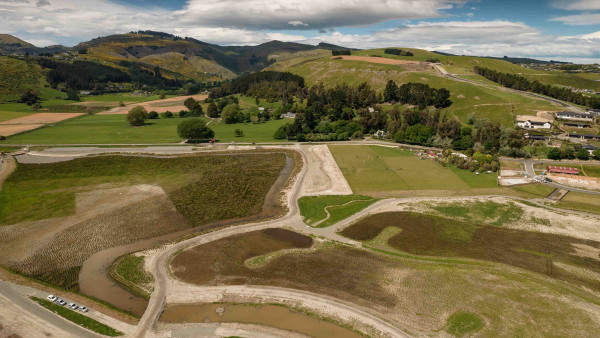
Dog survey highlights protection for the environment

Share this story
Protecting the natural habitats of birds and ecological restoration from being disturbed by dogs is a top priority for Christchurch.
Every 10 years, Christchurch City Council reviews its Dog Control Bylaw and Policy which set out how the 45,000 dogs registered across the district should be managed in public spaces.
A survey was open in July with more than 6,000 responses received to questions about whether dogs should be leashed on paths and tracks, protecting wildlife and natural habitats, dog owner responsibilities and how community spaces are used.
“What we heard loud and clear from the responses is whether people own a dog or not, they understand how vital it is that we protect our natural habitats from being disturbed,” Animal Services Manager Lionel Bridger said.
Seventy-seven per cent of people who responded to the survey said there should be better controls about where dogs are allowed in the Te Ihutai Avon Heathcote Estuary, which is one of the country’s most important coastal wetlands, with more than 140 bird species.
Sixty-nine per cent thought there should be better dog controls in parts of the Ōtākaro Avon River Corridor to protect the significant habitat restoration work and wildlife.
Meanwhile 64 per cent thought there should be some restrictions in our new stormwater basins like Te Kuru Wetland, to help bird populations establish.

One of the Council's new stormwater Te Kuru Wetlands.
Mr Bridger said it was good to see people understanding that dogs can have an impact on these important ecological sites.
“Particularly in breeding season, dogs can have a devastating effect – even the presence of a dog can make a bird abandon its nest,” he said.
“But we won’t be taking away a dog’s ability to have a run in open spaces, this is about developing a balanced approach which meets the needs of people, birds, dogs and wildlife.”
“We’re lucky to have over 10,000 hectares of parks across the district as well a lot of accessible coastline, so there are lots of great places for dog walking and off-leash exercising.”
Other survey questions covered whether dogs should be leashed on shared paths, footpaths in parks and on formed tracks.
“Many dog owners commented that they already used a leash or that they would like other dog owners to use a leash to make things safer for dogs and people, especially in busy areas,” Mr Bridger said.
We also asked about sports fields, community gardens and jetties/wharves, whether short leashes should be required on footpaths, and how many dogs one person should have control of at a time.
“Overall, we had really positive responses. One area where the results were less clear cut was a question on leashing dogs on formed tracks. Forty-four per cent of people thought dogs should be leashed on formed tracks to protect wildlife, biodiversity, safety and grazing stock, but 49 per cent thought they shouldn’t as they wanted to prioritise off leash adventures,” Mr Bridger said.
“We will be taking all of this into consideration when developing the latest version of the bylaw and policy so thank you to everyone who took the time to respond.”
A draft bylaw and policy will go out for public feedback later this year with the final adoption to be considered by the Council.
Further information about the results of the survey can be found on our LetsTalk page.
